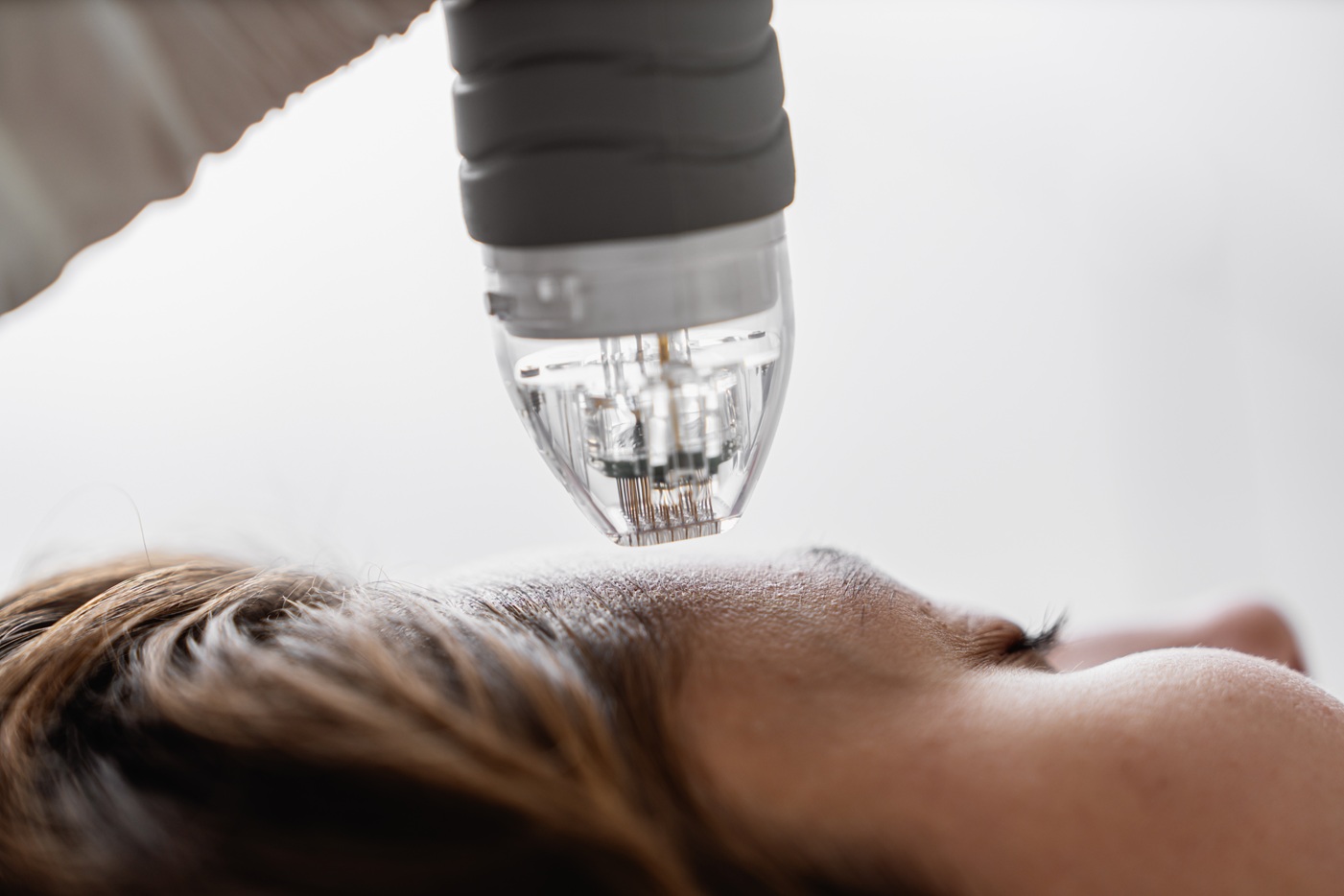How to Protect Your Eyes from Laser Treatments and Procedures

Your eyes face significant risks from lasers in hospital and clinic settings. Discover why certified eyewear is essential to prevent serious injury, how to select the right protection and how biometric systems enhance safety compliance. This guide provides practical steps for healthcare professionals to safeguard vision. Prioritize eye safety in your facility today.
Imagine a laser beam in an operating room, precise enough to correct vision or remove tissue. That same power can cause irreversible eye damage in a split second without proper protection. In hospitals and clinics using RightPatient’s biometric solutions, laser procedures are common, from ophthalmology to dermatology. Certified eyewear, paired with technology-driven compliance, is critical to protect clinicians and ensure patient safety. Explore how to keep eyes safe while leveraging biometric tools to strengthen safety protocols.
Understand Laser Risks in Healthcare
Lasers in healthcare settings, such as those for cataract surgery or skin resurfacing, emit intense light that can harm the retina—the eye’s light-sensitive layer—leading to permanent vision loss. The American Academy of Ophthalmology warns that many ocular injuries occur when clinicians or staff bypass proper eyewear, assuming brief exposure is safe. Reflected beams, bouncing off surgical instruments or clinic surfaces, pose additional risks, especially in fast-paced environments like operating theaters.
Invisible lasers, common in procedures like laser-assisted in situ keratomileusis (LASIK) or tattoo removal, don’t trigger the eye’s natural blink reflex, increasing exposure risks. In a busy hospital, where multiple staff handle lasers, a momentary lapse—such as adjusting equipment without protection—can lead to injury. Recognizing these dangers underscores the need for rigorous eye safety protocols in healthcare facilities.
Select Eyewear Tailored to Medical Lasers
Choosing eyewear for healthcare laser procedures requires matching protection to the laser’s specific light output. Medical lasers, like excimer (193 nm) for LASIK or Nd:YAG (1064 nm) for dermatology, demand precise filters to block harmful wavelengths while maintaining visibility for precision tasks. Browsing different laser safety glasses options allows clinicians to explore certified eyewear designed for various medical laser types, ensuring safety and clear sightlines during procedures.
Comfort is vital in high-stakes settings like surgical suites. Ill-fitting laser eye protection safety glasses can distract clinicians, risking procedural errors. Lightweight polycarbonate frames or fit-over designs for prescription glasses enhance wearability. Consulting a Laser Safety Officer ensures eyewear meets the needs of specific procedures, such as retinal photocoagulation, allowing healthcare professionals to focus on patient care without compromising safety.
Adhere to Healthcare Safety Standards
Eyewear in hospitals and clinics must comply with stringent standards like ANSI Z136.1, which ensures protection against direct laser exposure for several seconds—critical during delicate procedures. The Occupational Safety and Health Administration (OSHA) mandates laser eye protection goggles for staff working with Class 3B or 4 lasers, common in ophthalmology and cosmetic treatments. A 2023 OSHA report noted that inadequate eyewear contributed to numerous laser-related incidents in healthcare settings, highlighting the need for compliance.
Check eyewear labels for optical density (OD) ratings, which indicate the level of laser light blocked. Polycarbonate lenses suit most clinical tasks, while glass lenses are better for high-energy lasers. Certified laser safety glasses, verified through tools like an OD Calculator, ensure compliance with standards, protecting clinicians and aligning with hospital safety protocols.
Integrate Biometrics for Safety Compliance
Ensuring eyewear compliance in healthcare settings can be challenging, especially in large hospitals with multiple laser-equipped departments. RightPatient’s biometric patient identity management systems offer a model for enhancing safety protocols. By adapting biometric technology—such as iris or facial recognition—hospitals can track which staff wear appropriate laser eye protection safety glasses during procedures. For example, integrating eyewear checks into pre-procedure biometric verification ensures compliance is logged alongside patient identity confirmation.
This approach streamlines accountability. A 2024 study in the Journal of Occupational Health found that nearly one in three healthcare workers skipped protective gear due to discomfort or oversight. Biometric systems can flag non-compliance, prompting immediate corrective action, such as replacing ill-fitting glasses. This integration reduces risks, protects staff and reinforces a culture of safety in high-pressure clinical environments.
Prioritize Comfort for Clinical Precision
Comfortable eyewear is critical in healthcare, where precision is paramount. Uncomfortable laser eye protection glasses can distract surgeons or technicians, increasing the risk of errors during procedures like laser skin resurfacing.
A 2024 workplace health study noted that discomfort led many clinicians to bypass protective gear, contributing to preventable injuries. Imagine a dermatologist pausing mid-procedure to adjust foggy glasses—such disruptions can compromise patient outcomes.
Select eyewear with features designed for clinical settings:
- Anti-fog coatings: Prevent lens fogging in humid operating rooms.
- Side shields: Block stray beams from surgical tools or reflective surfaces.
- Adjustable frames: Ensure a secure, comfortable fit for long procedures.
Fit-over or wrap-around designs accommodate prescription glasses, enhancing compliance. Testing eyewear during training ensures it meets the demands of extended clinical work, keeping focus on patients rather than discomfort.
Maintain Eyewear for Reliable Protection
Damaged eyewear undermines safety in healthcare settings. Scratches or worn coatings on laser safety glasses can allow harmful light to penetrate, risking eye injury during procedures like cataract surgery.
A 2022 National Institute for Occupational Safety and Health (NIOSH) report found that poorly maintained eyewear contributed to laser-related incidents in hospitals. Regular inspections before procedures, such as checking for lens cracks, are essential to ensure protection.
Follow these maintenance practices:
- Clean properly: Use manufacturer-recommended solutions to preserve coatings.
- Inspect daily: Check for scratches or frame damage before each use.
- Store securely: Use protective cases to prevent wear during transport.
Pair maintenance with staff training led by a Laser Safety Officer. Biometric systems can log maintenance checks, ensuring eyewear is ready for use in critical procedures, reducing risks in busy clinics.
Strengthen Healthcare Safety Culture
Protecting eyes in healthcare laser procedures requires certified eyewear, rigorous standards and smart technology. Laser safety glasses tailored to medical lasers, combined with ANSI Z136.1 compliance, provide a robust defense against injury. Integrating biometric systems, like RightPatient’s platform, enhances compliance by tracking eyewear use alongside patient identity verification.
Have you considered how technology could streamline your facility’s safety protocols? A hospital using biometrics to confirm both patient identities and staff eyewear compliance reduces errors and builds trust. By prioritizing comfort, maintenance and training, you safeguard clinicians’ vision and ensure safer, more precise patient care in every laser procedure.





Leave a Reply
Want to join the discussion?Feel free to contribute!